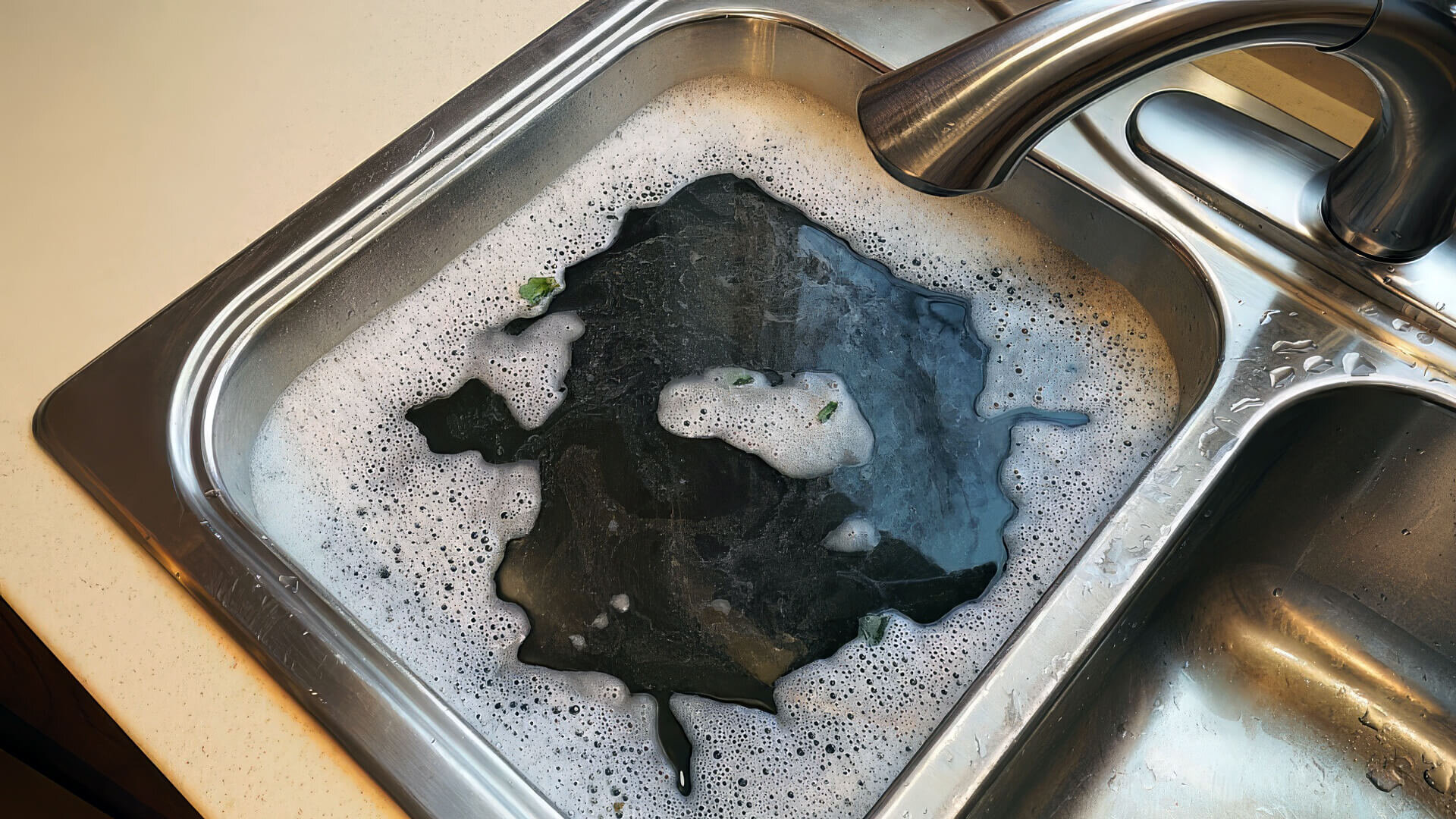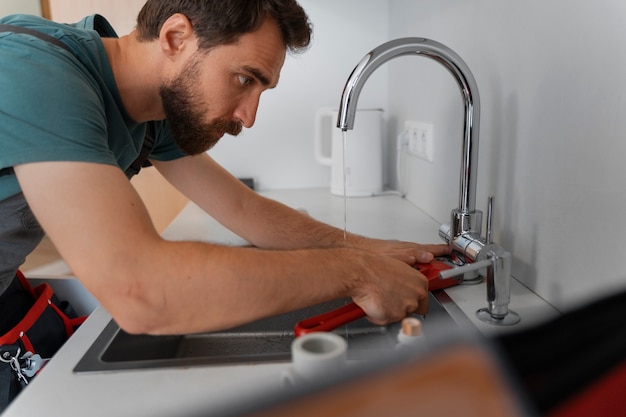Handy Techniques For Addressing A Slow-Draining Sink
Handy Techniques For Addressing A Slow-Draining Sink
Blog Article
Just how do you really feel in regards to How to Fix a Slow Draining Sink?

Intro
We have actually all been there: You're brushing your teeth or cleaning your hands, and you discover the water pooling in the sink. Instead of swiftly swirling down the drain, it remains, transforming your once-refreshing morning routine right into a mini overload scene. A slow-draining sink isn't just bothersome; it's frequently an indication of larger plumbing concerns prowling below the surface area. Fortunately is that a lot of slow-draining sinks can be fixed with a little know-how, a couple of fundamental tools, and some perseverance. All set to tackle this job head-on? Allow's roll up our sleeves and dive right in.
Comprehending the Reasons For a Slow-Draining Sink
Prior to you begin poking around in your pipelines, it helps to understand what could be creating the stagnation. Understanding the origin makes it simpler to pick the right fix.
Devices and Materials You'll Need
The right devices make all the difference. The good news is, you won't need a completely stocked plumbing professional's van to finish the job.
Step-by-Step Overview to Repairing a Slow-Draining Sink
Now, allow's enter into the nitty-gritty. This step-by-step procedure will assist you with easy techniques to restore your sink's drain.
Step 1: Get Rid Of and Clean the Stopper
Usually, the stopper (that tiny plug you lower to obstruct water) is the first offender. Remove it carefully and clean off any kind of hair or gunk entraped around its base. Rinse it extensively prior to putting it back in place.
Action 2: Use a Bettor to Remove Debris
Got that plunger all set? Placement it over the drain and offer it a couple of firm pumps. The idea is to produce suction that can loosen any blockage. If you see little bits of debris floating up, you're on the ideal track.
Step 3: Attempt a Drainpipe Serpent or Cord Hanger
If the bettor doesn't work, it's time to bring out the drain serpent. Gently feed it into the drain and spin as you go. You might feel some resistance-- that's likely the clog. Maintain twisting and pulling up until you remove the blockage. If you don't have a drain snake, a corrected wire hanger can work in a pinch.
Step 4: Use a DIY Drain Cleaner
A natural cleaner made from baking soft drink and vinegar can break down recurring crud. Pour half a mug of cooking soft drink into the drainpipe, adhered to by half a cup of vinegar. Allow it fizz for about 15 minutes, after that flush with warm water. This chain reaction often does marvels for small clogs.
Tip 5: Reconstruct and Check the Sink
Put everything back with each other and run the tap. Does the water now swirl away at a respectable rate? If yes, provide on your own a pat on the back. Otherwise, do not misery-- there are still a few more tricks up your sleeve.
Essential Devices for Do It Yourself Repairs
A bettor is your best beginning point. A tiny, sink-sized bettor produces suction that can dislodge minor obstructions. For even more relentless clogs, a drainpipe serpent (often called a plumber's auger) works wonders. A set of gloves, a flashlight, and maybe a set of protective safety glasses are likewise helpful.
Advised Cleansing Solutions
Mild recipe soap and hot water can assist break down oily accumulation. A combination of cooking soda and vinegar is a reliable natural remedy, and enzymatic cleansers supply a more environmentally friendly approach. Keep chemical drainpipe cleansers as a last option, as they can be rough on your pipes.
Usual Culprits Behind Slow Water Drainage
So, what's obstructing points up? Generally, it's a mixture of day-to-day debris-- think hair, soap residue, tooth paste deposit, and leftover food fragments. In time, these tiny bits build up and cling to the pipeline walls, progressively narrowing the flow and making it harder for water to go through. In some cases, natural resource from difficult water can also include in the gunk, producing the perfect storm for stubborn blockages.
When is it Time to Act?
If you discover the water draining slower than normal, it's a great concept to intervene quicker as opposed to later. Waiting as well long might result in complete obstructions, unpleasant smells, or perhaps pipe damage. If the water takes greater than a few seconds to clean out after switching off the tap, consider it a warning and prepare to place on your DIY hat.
Security First: Safety Measures and Prep work
Before you launch into unclogging mode, think of safety and security. You're managing possibly unclean water and particles, so slip on a set of handwear covers. If you're utilizing chemical cleaners, ensure the space is well-ventilated and follow the directions on the label.
Protective Equipment and Work Area Setup
Put down some old towels or cloths around the sink location to catch sprinkles. Eliminate any things that may enter your means, like soap dispensers or tooth brush holders. Ensure you have excellent lights-- get a flashlight if required.
Alternate Techniques for Stubborn Clogs
Not all clogs are produced equivalent. If your sink still rejects to cooperate, think about these alternative services.
Sodium Bicarbonate and Vinegar Technique
We already touched on this, yet it deserves keeping in mind once again. This mild, environment-friendly approach is safer than chemical cleaners and often rather reliable.
Chemical Drain Cleansers
Enzyme-based cleaners make use of all-natural microorganisms to digest raw material. They're a superb choice if you're seeking to stay clear of severe chemicals. Simply remember, they may take a bit longer to work their magic.
Chemical Drain Cleansers: Benefits And Drawbacks
Chemical cleaners can blast via hard obstructions quick, but they're not without drawbacks. They can create warm and fumes, damage pipes if used exceedingly, and position environmental dangers. Utilize them moderately, and always follow the instructions meticulously.
Safety Nets to Maintain Your Sink Flowing
Prevention is the very best treatment. By taking on a few simple habits, you can keep your sink from reducing to begin with.
Routine Cleaning Up Habits
Clean down the sink container and component location routinely. Remove hair or food fragments before they have an opportunity to wash down the drain.
Preventing Damaging Materials Down The Tubes
Think twice before discarding coffee grounds, grease, or fibrous vegetable scraps down the sink. These wrongdoers cling to pipeline walls, developing clogs in time.
Regular Maintenance Checks
Schedule a quick monthly evaluation. Run warm water with the sink for a couple of minutes, paying attention to the circulation. If it seems slow, act quick prior to it becomes a full-on blockage.
When to Call a Professional Plumbing Technician
Often, regardless of how difficult you try, that clog just will not move. That's when it's time to generate the pros.
Indications That Show a Much More Major Issue
If your sink drains slowly despite several attempts, or if you observe water backing up in other fixtures (like your shower or toilet), you might have a more significant pipes concern hiding deeper in the system.
Stabilizing Do It Yourself Initiatives with Professional Assistance
While do it yourself can save you money and use a feeling of accomplishment, there's no shame in calling a specialist. A professional plumbing technician can analyze your entire pipes setup, ensuring there's no underlying damage or lasting issue that could cost you extra later on.
Comparing Costs and Long-Term Solutions
Prior to making a decision, think about the big picture. An economical, quick fix might address the problem briefly, however buying a much more permanent option can conserve you cash and anxiety in the long run.
Evaluating the Expenditures of Do It Yourself vs. Expert Solutions
DIY repairs typically cost bit more than the price of a bettor or a bottle of cooking soft drink. Specialist services, on the other hand, featured a price tag yet might protect against repeated issues and pricey repairs later on.
Buying Top Quality Fixtures and Upgrades
If your sink's style contributes to constant obstructions, it may be worth updating to higher-quality components or altering the pipes layout. Consider this a financial investment in your home's capability and comfort.
Conclusion
A slow-draining sink can feel like a minor irritation, but it's typically an indication that your pipes requires a little tender loving care. By understanding the origin, employing the right tools and methods, and dedicating to simple safety nets, you can keep your sink streaming openly. And when all else stops working, never ever hesitate to call in an expert-- your home's plumbing is worth the investment in treatment and upkeep.
Three Common Ways to Fix a Slow Drain
Baking Soda Method
Boil a full pot of water. Measure out cup of baking soda and pour it down the drain. Then take cup of the magical cleansing substance known as white vinegar and drop that down there too. Allow the mixture to fizz in the drain for five minutes as the vinegar and baking soda combine. Now dump in that whole pot of boiling water. This combination of cleaning substances should clear out anything that is causing your sink to drain slowly. If it doesn t...
Zip-It
If the baking soda method doesn t clear out your drain, it may be because a significant amount of hair and/or other debris has collected there and you need to remove it. Purchase a Zip-It tool at any home improvement or hardware store and insert it into your drain. It will catch any collected hair or debris that s blocking the flow of water. Pull it out. If it s got a big clump of hair, etc. on the end, you ve probably got your culprit.
Drain Cleaner
If these methods don t work, there is the standard drain cleaner that you can also buy in a hardware store or even your local grocery store. It s better if you can use a household solution, but these drain cleaners often work in a pinch. They re very simple to use. You generally just dump them in your drain and wait. If even this method is not effective, it may be time to call the plumber.
https://www.mrrooter.com/oneida/about-us/blog/2017/july/three-common-ways-to-fix-a-slow-drain/

As a devoted reader on 7 Ways To Fix A Slow-Draining Sink Before You Call A Plumber, I assumed sharing that section was a good idea. In case you appreciated our page please make sure you remember to share it. Thank you for taking the time to read it.
Booking Page Report this page